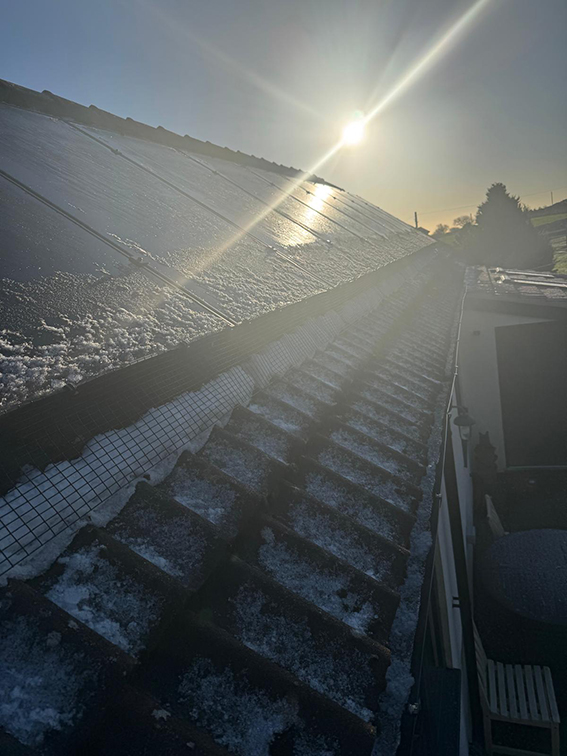
Air Source vs Ground Source Heat Pumps: Which is Best?
What Are Heat Pumps and How Do They Work?
When making the comparison between different types of heat pumps it is a good idea to know how a heat pump actually works.
While gas boilers use burning gas to the heat water, and electric heating merely heats coils of metal, heat pumps use physics to create heat.
The secret is making a heat differential between an outside source and a refrigerant within the heat pump system.
The ’source’, in this case either the air or the ground, contains a small amount of heat that is extracted and passed over pipes to create that temperature differential within the refrigerant liquid.
Once the liquid is slightly heated it’s put under intense pressure, squeezing the molecules together and generating even more heat.
The heat is then used to heat water in a similar way to traditional heating.
Understanding Air Source Heat Pumps
Obviously, that explanation is an oversimplification, so let’s take a specific look at how air source heat pumps work.
You may have seen air source heat pump fans on the outside of buildings, they are large boxes that look a bit like air conditioning units.
...And that’s because air source heat pumps are a bit like air conditioning units - they just do the opposite job.
The fan creates an air flow which is passed over the refrigerant – the small amount of heat in that air creates the differential and increases the temperature of the liquid.
The liquid is then passed through valves that put it under huge pressure, causing it to increase in temperature even more.
Once the desired temperature is reached, the liquid is forced through coils in a water tank, heating the water for your central heating and hot water provision.
How Ground Source Heat Pumps Operate
As the name suggests, ground source heat pumps get their heat from the earth beneath our feet.
Instead of extracting the heat from the air using a fan, they extract heart from the ground using a series of pipes.
These pipes can either be buried at around 70 – 200 centimeters and coiled over a fairly big area of land … or a single loop buried in a 100 meter borehole.
The refrigerant runs through the pipes and is heated by the ground temperature.
When it returns to the pump system, it’s treated the same way it is an air source heat pump.
Key Differences Between Air Source and Ground Source Systems
Our notorious British weather is unpredictable at best and air temperatures can fluctuate wildly.
While air source heat pumps are designed with this in mind, the air outside can affect their efficiency.
This is where ground source heat pumps can have an advantage.
Even here in the UK, once you dig a little way down, the heat in the ground stays pretty constant.
That means that ground source heat pumps can be much more consistent and, therefore, more efficient.
The disadvantage is, of course, having the land or space to be able to bury metres and metres of pipes to collect the heat you need.
Apart from the way they collect heat, both ground and air source heat pumps function in the same way.
Heat Pump Installation Requirements
This is where the real differences between the 2 types of heat pumps are highlighted.
Whichever heat pump type you fit you will need space for a water tank and, possibly, a smaller buffer tank as a backup.
This can involve either swapping out existing cylinder or with a more modern combination system the cylinder can be sited in previous fossil fuel boiler area.
All retro fit installs are different, and exact location can be decided and discussed at survey
Once you have decided where the tank is going you need to heat them with the source of your choice!
All retro fit installs are different, and exact location can be decided and discussed at survey
Once you have decided where the tank is going you need to heat them with the source of your choice!
By far the most practical, and easy to fit, in the average domestic home is an air source.
These merely require a unit containing the fan, and a few other technical bits and bobs, to be fitted somewhere outside the home.
Generally, these units are about the size of a washing machine and can be either free standing or mounted on the wall.
The ground source, however, need a lot of room – 3 x the footprint of your home if you are laying the pipes horizontally, in fact.
It's less if you are using vertical boreholes but those boreholes have to be 5 meters away from the property, 5 metres from any boundaries and 5 metres from each other.
The amount of piping you need is dictated by the heat needed for your home.
The general rule is 60-meter pipe per kW of heat if you are using the horizontal method and 20 meters if using the vertical borehole method.
You need less for the vertical system because the heat increases the further down you dig.
Energy Efficiency: Which Heat Pump System Performs Better?
This is a tricky one to quantify, especially with the UK’s unpredictable weather.
Ground source heat pumps are certainly more consistent as the ground heat rarely changes – staying above 5°C for most of the year.
Conversely, our weather can mean air temperatures fluctuate between -5°C to 25°C during an average year.
This means the air source heat pump is super-efficient during the warmer days but has to work a little harder as the temperature drops.
However, air source heat pumps don’t have to move huge volumes of liquid through metres and metres of piping – so they have an advantage over ground source heat pumps there.
If we were made to choose the most efficient system, we may have to say the ground source edges it ever so slightly, but there isn’t much in it over a full 12 months.
Maintenance, Lifespan, and Reliability of Heat Pumps
Like most household appliances, a heat pump should last you between 15 and 20 years if you service it regularly and there is no external damage.
You can pretty much forget about the ground pipes on those systems, as they are pressure tested and shouldn’t degrade if they are left alone.
It's the moving parts of a system that you’ll need to maintain and replace - such as the heat exchange, water pumps and fan unit on an air source system.
Ensure you have your heat pump system serviced every 12 months to keep it in good order and pick up any potential problems.
Financial Incentives and Running Costs
When it comes to running cost, there is very little between and air source system and a ground source system.
Historically, ground source heat pumps were more efficient and, therefore, cheaper to run.
However, over the last decade, air source heat pump technology has come on in leaps and bounds, making them almost as efficient as ground source.
It's the initial cost that makes the real difference.
Ground source systems need a huge amount of groundwork so, unless you are renovating a big property, or embarking on a new build, air source is probably the most cost effective for the average UK home.


